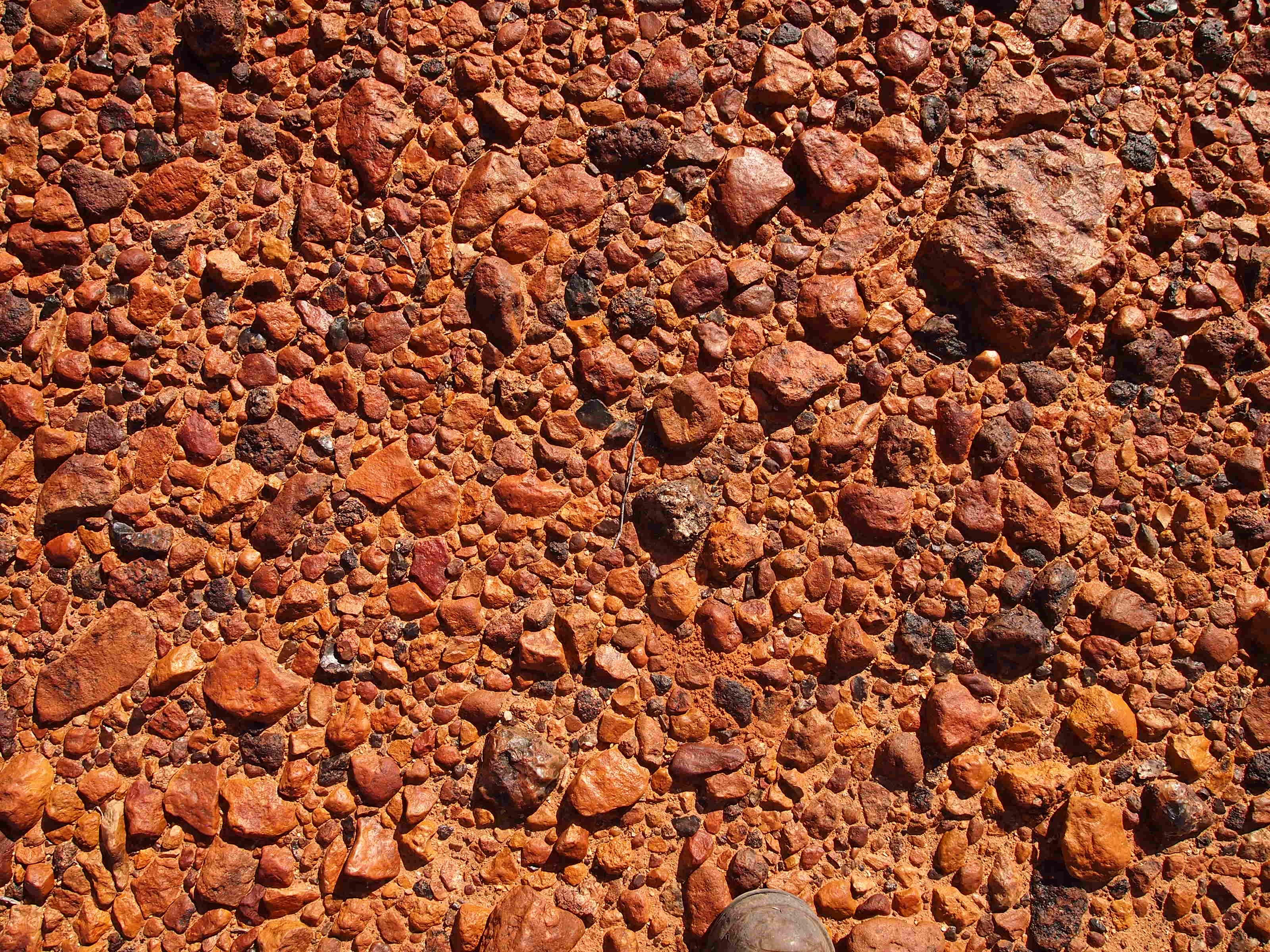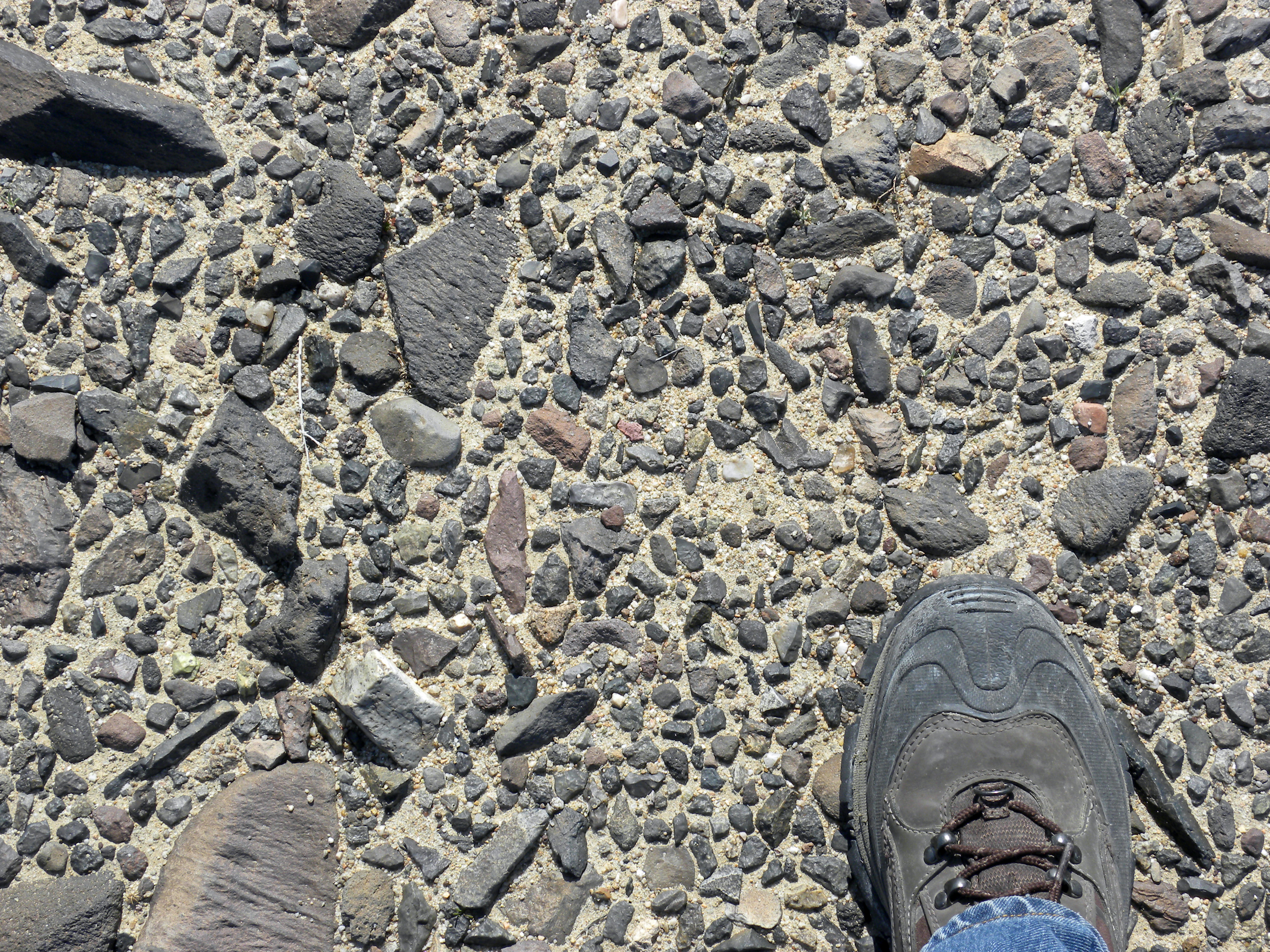Desert Pavement on:
[Wikipedia]
[Google]
[Amazon]

 A desert pavement, also called reg (in the western Sahara), serir (eastern Sahara), gibber (in Australia), or saï (central Asia) is a
A desert pavement, also called reg (in the western Sahara), serir (eastern Sahara), gibber (in Australia), or saï (central Asia) is a
 Desert pavement surfaces are often coated with
Desert pavement surfaces are often coated with
 Stony deserts may be known by different names according to the region. Examples include:
Gibbers: Covering extensive areas in
Stony deserts may be known by different names according to the region. Examples include:
Gibbers: Covering extensive areas in
Desert Processes Working Group
Aeolian landforms Deserts Sediments zh:岩漠

desert
A desert is a barren area of landscape where little precipitation occurs and, consequently, living conditions are hostile for plant and animal life. The lack of vegetation exposes the unprotected surface of the ground to denudation. About on ...
surface covered with closely packed, interlocking angular or rounded rock fragments of pebble
A pebble is a clast of rock with a particle size of based on the Udden-Wentworth scale of sedimentology. Pebbles are generally considered larger than granules ( in diameter) and smaller than cobbles ( in diameter). A rock made predomina ...
and cobble size. They typically top alluvial fans. Desert varnish
Desert varnish or rock varnish is an orange-yellow to black coating found on exposed rock surfaces in arid environments. Desert varnish is approximately one micrometer thick and exhibits nanometer-scale layering. Rock rust and desert patina are o ...
collects on the exposed surface rocks over time.
Geologists debate the mechanics of pavement formation and their age.
Formation
Several theories have been proposed for the formation of desert pavements. A common theory suggests that they form through the gradual removal ofsand
Sand is a granular material composed of finely divided mineral particles. Sand has various compositions but is defined by its grain size. Sand grains are smaller than gravel and coarser than silt. Sand can also refer to a textural class ...
, dust and other fine-grained material by the wind and intermittent rain, leaving the larger fragments behind. The larger fragments are shaken into place through the forces of rain, running water, wind, gravity, creep, thermal expansion and contraction, wetting and drying, frost heaving, animal traffic, and the Earth's constant microseismic
In seismology, a microseism is defined as a faint earth tremor caused by natural phenomena. Sometimes referred to as a "hum", it should not be confused with the anomalous acoustic phenomenon of the same name. The term is most commonly used to refe ...
vibrations. The removal of small particles by wind does not continue indefinitely, because once the pavement forms, it acts as a barrier to resist further erosion. The small particles collect underneath the pavement surface, forming a vesicular A soil horizon
A soil horizon is a layer parallel to the soil surface whose physical, chemical and biological characteristics differ from the layers above and beneath. Horizons are defined in many cases by obvious physical features, mainly colour and texture. ...
(designated "Av").
A second theory supposes that desert pavements form from the shrink/swell properties of the clay underneath the pavement; when precipitation is absorbed by clay it causes it to expand, and when it dries it cracks along planes of weakness. Over time, this geomorphic action transports small pebbles to the surface, where they stay through lack of precipitation that would otherwise destroy the pavement by transport of the clasts or excessive vegetative growth.
A newer theory of pavement formation comes from studies of places such as Cima Dome, in the Mojave Desert
The Mojave Desert ( ; mov, Hayikwiir Mat'aar; es, Desierto de Mojave) is a desert in the rain shadow of the Sierra Nevada mountains in the Southwestern United States. It is named for the indigenous Mojave people. It is located primarily ...
of California, by Stephen Wells and his coworkers. At Cima Dome, geologically recent lava
Lava is molten or partially molten rock (magma) that has been expelled from the interior of a terrestrial planet (such as Earth) or a moon onto its surface. Lava may be erupted at a volcano or through a fracture in the crust, on land or ...
flows are covered by younger soil layers, with desert pavement on top of them, made of rubble from the same lava. The soil has been built up, not blown away, yet the stones remain on top. There are no stones in the soil, not even gravel.
Researchers can determine how many years a stone has been exposed on the ground. Wells used a method based on cosmogenic helium-3
Helium-3 (3He see also helion) is a light, stable isotope of helium with two protons and one neutron (the most common isotope, helium-4, having two protons and two neutrons in contrast). Other than protium (ordinary hydrogen), helium-3 is the ...
, which forms by cosmic ray
Cosmic rays are high-energy particles or clusters of particles (primarily represented by protons or atomic nuclei) that move through space at nearly the speed of light. They originate from the Sun, from outside of the Solar System in our own ...
bombardment at the ground surface. Helium-3 is retained inside grains of olivine
The mineral olivine () is a magnesium iron silicate with the chemical formula . It is a type of nesosilicate or orthosilicate. The primary component of the Earth's upper mantle, it is a common mineral in Earth's subsurface, but weathers qui ...
and pyroxene
The pyroxenes (commonly abbreviated to ''Px'') are a group of important rock-forming inosilicate minerals found in many igneous and metamorphic rocks. Pyroxenes have the general formula , where X represents calcium (Ca), sodium (Na), iron (Fe I ...
in the lava flows, building up with exposure time. The helium-3 dates show that the lava stones in the desert pavement at Cima Dome have all been at the surface the same amount of time as the solid lava flows right next to them. He wrote in a July 1995 article in ''Geology,'' that he concluded, "stone pavements are born at the surface." While the stones remain on the surface due to heave, deposition of windblown dust must build up the soil beneath that pavement.
For the geologist, this discovery means that some desert pavements preserve a long history of dust deposition beneath them. The dust is a record of ancient climate, just as it is on the deep sea floor and in the world's ice caps.
 Desert pavement surfaces are often coated with
Desert pavement surfaces are often coated with desert varnish
Desert varnish or rock varnish is an orange-yellow to black coating found on exposed rock surfaces in arid environments. Desert varnish is approximately one micrometer thick and exhibits nanometer-scale layering. Rock rust and desert patina are o ...
, a dark brown, sometimes shiny coating that contains clay minerals. In the USA a famous example can be found on Newspaper Rock in southeastern Utah
Utah ( , ) is a state in the Mountain West subregion of the Western United States. Utah is a landlocked U.S. state bordered to its east by Colorado, to its northeast by Wyoming, to its north by Idaho, to its south by Arizona, and to its ...
. Desert varnish is a thin coating (patina) of clays, iron, and manganese on the surface of sun-baked boulders. Micro-organisms may also play a role in their formation. Desert varnish is also prevalent in the Mojave desert and Great Basin geomorphic province.
Local names
Australia
Australia, officially the Commonwealth of Australia, is a sovereign country comprising the mainland of the Australian continent, the island of Tasmania, and numerous smaller islands. With an area of , Australia is the largest country by ...
such as parts of the Tirari-Sturt stony desert ecoregion
An ecoregion (ecological region) or ecozone (ecological zone) is an ecologically and geographically defined area that is smaller than a bioregion, which in turn is smaller than a biogeographic realm. Ecoregions cover relatively large areas of ...
are desert pavements called ''Gibber Plains'' after the pebbles or ''gibbers.'' ''Gibber'' is also used to describe ecological communities, such as ''Gibber Chenopod Shrublands'' or ''Gibber Transition Shrublands''.
In North Africa
North Africa, or Northern Africa is a region encompassing the northern portion of the African continent. There is no singularly accepted scope for the region, and it is sometimes defined as stretching from the Atlantic shores of Mauritania in ...
, a vast stony desert plain is known as ''reg''. This is in contrast with ''erg
The erg is a unit of energy equal to 10−7joules (100 nJ). It originated in the Centimetre–gram–second system of units (CGS). It has the symbol ''erg''. The erg is not an SI unit. Its name is derived from (), a Greek word meaning 'work' o ...
'', which refers to a sandy desert area.Jean Dresch et al., ''Géographie des régions arides'', Presses universitaires de France, Paris, 1982.
See also
* * * , a mechanism of surface rock formation * * * *Notes
References
* Al-Qudah, K.A. 2003. ''The influence of long-term landscape stability on flood hydrology and geomorphic evolution of valley floor in the northeastern Badin of Jordan''. Doctoral thesis, University of Nevada, Reno. * Anderson, K.C. 1999. ''Processes of vesicular horizon development and desert pavement formation on basalt flows of the Cima Volcanic Field and alluvial fans of the Avawatz Mountains Piedmont, Mojave Desert, California''. Doctoral thesis, University of California, Riverside. * Goudie, A.S. 2008. ''The history and nature of wind erosion in deserts''. Annual Review of Earth and Planetary Sciences 36:97-119. * Grotzinger, et al. 2007. ''Understanding Earth'', fifth edition. Freeman and Company. 458–460. * Haff, P.K. and Werner, B.T. 1996. D''ynamical processes on desert pavements and the healing of surficial disturbance''. Quaternary Research 45(1):38-46. * Meadows, D.G., Young, M.H. and McDonald, E.V. 2006. ''Estimating the fine soil fraction of desert pavements using ground penetrating radar''. Vadose Zone Journal 5(2):720-730. * Qu Jianjun, Huang Ning, Dong Guangrong and Zhang Weimin. 2001. ''The role and significance of the Gobi desert pavement in controlling sand movement on the cliff top near the Dunhuang Magao Grottoes''. Journal of Arid Environments 48(3):357-371. * Rieman, H.M. 1979. ''Deflation armor (desert pavement)''. The Lapidary Journal 33(7):1648-1650. * Williams, S.H. and Zimbelman, J.R. 1994. ''Desert pavement evolution: An example of the role of sheetflood''. The Journal of Geology 102(2):243-248.External links
{{Commons categoryDesert Processes Working Group
Aeolian landforms Deserts Sediments zh:岩漠